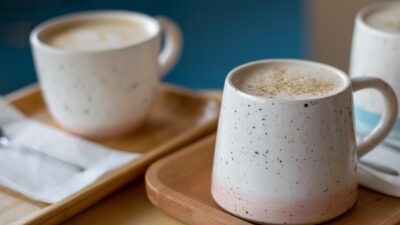Tea is more than just a comforting beverage; it’s a world of flavors, aromas, and cultural practices waiting to be explored. Just as wine can elevate a meal, the right tea can enhance your dining experience. Whether you’re hosting a special occasion or simply enjoying a quiet dinner at home, pairing tea with food can transform the meal. This guide offers insights into the art and science of tea and food pairing, ensuring you can make the most out of each cup.
Understanding Tea Basics
Before diving into pairing, let’s take a moment to understand the different types of tea. All tea originates from the Camellia sinensis plant, and variations arise not just from processing methods but also from the regions they come from. Here are the most common categories:
- Green Tea: Light and grassy, with a hint of astringency.
- Black Tea: Bold and robust, often rich in flavor.
- Oolong Tea: A hybrid between green and black, with a range of floral to nutty flavors depending on its oxidation level.
- White Tea: Delicate and sweet, often with subtle floral notes.
- Herbal Tea: Not technically tea, these infusions are derived from various plants and can range from sweet to spicy.
Tips for Pairing Tea with Food
1. Complementarity vs. Contrast
- Complementarity involves pairing tea with food that shares similar flavors. For instance, a floral oolong can enhance a meal featuring jasmine rice.
- Contrast offers a refreshing counterpoint to the food, such as a smoky black tea with rich, fatty foods, which can cleanse the palate.
2. Match the Weight
Just as you wouldn’t pair a light salad with a robust red wine, the weight and intensity of both food and tea should match. Light teas like white and green should accompany lighter dishes, while stronger teas like black and oolong can stand up to heartier meals.
3. Consider the Flavor Profile
Focus on the main flavors in your dish:
- Citrus: Pair with green tea or herbal infusions like lemongrass, which can brighten the flavors.
- Spicy: Strong black teas can hold their own against spicy dishes, while milder oolongs can enhance without overwhelming.
- Savory: Consider umami-rich foods with earthier teas like dark oolongs or aged pu-erh.
4. Temperature Matters
The temperature at which tea is served can impact its flavor. Brewed at the right temperature for an appropriate time for each type of tea further enhances its pairing potential. For example, green teas are best steeped at lower temperatures (around 160-180°F), making them perfect for lighter, delicate dishes.
Suggested Pairings
Breakfast
- Black Tea (e.g., English Breakfast) with Scrambled Eggs and Toast: The robust flavor complements the texture of eggs and adds richness to a simple toast.
- Herbal Tea (e.g., Chamomile) with Yogurt and Fruit: The soothing qualities of chamomile enhance the freshness without overpowering it.
Lunch
- Green Tea (e.g., Sencha) with Sushi: The grassy notes cut through the fish’s richness and cleanse the palate.
- Oolong Tea with Grilled Chicken Salad: The complex flavors of oolong add depth to the savory chicken and fresh greens.
Dinner
- Black Tea (e.g., Assam) with Barbecue Ribs: The robust tea complements the smoky, rich flavors of the meat.
- White Tea with Light Pasta Dishes: The delicate and subtly sweet profile goes beautifully with creamy sauces without overwhelming them.
Dessert
- Herbal Tea (e.g., Peppermint) with Chocolate Desserts: The cooling mint contrasts beautifully with the rich sweetness of chocolate.
- Green Tea (e.g., Matcha) with Pistachio Baklava: The nutty flavors of both desserts and tea blend harmoniously.
Conclusion
Pairing tea with food is an adventure that encourages exploration and creativity. While guidelines can help, the best pairings often arise from personal preference and experimentation. So pour yourself a cup, try some new combinations, and enjoy the delightful interplay of flavors that tea can bring to your culinary experience. Cheers to the perfect tea and food pairing!



